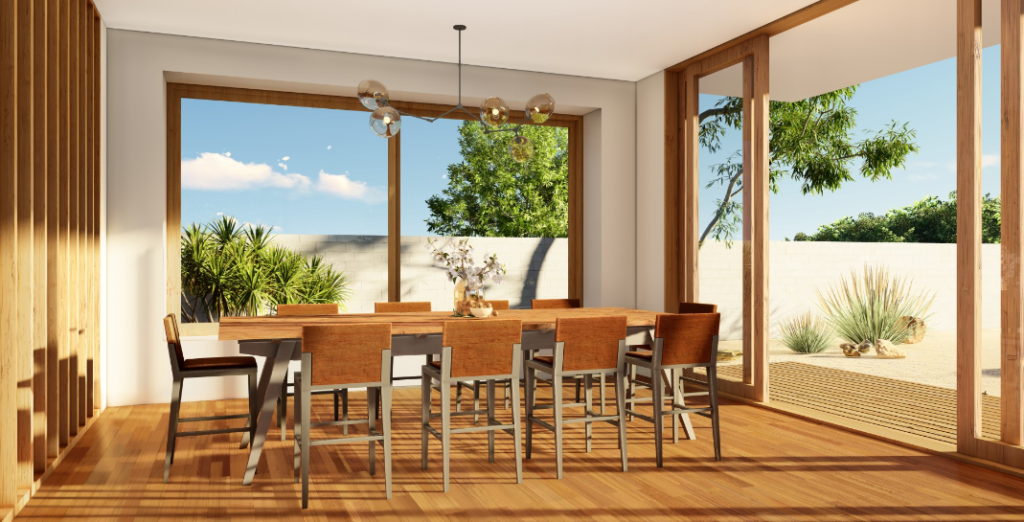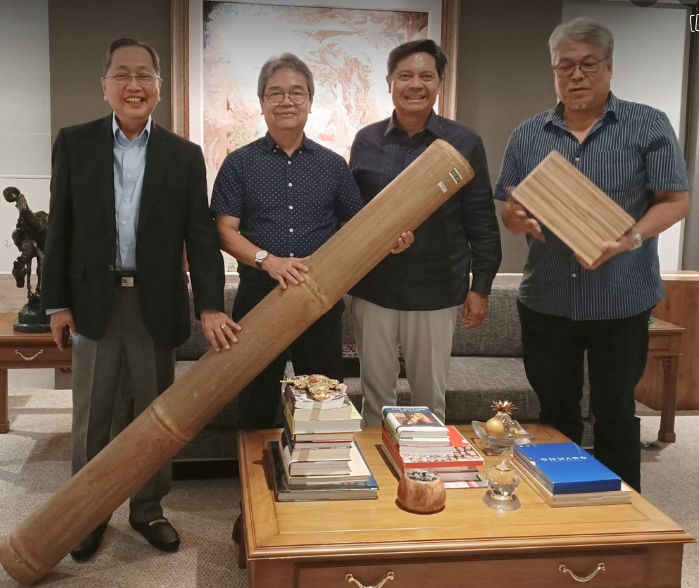
The Philippines will generate revenue of as much as P400 billion ($8 billion) from an emerging industry in locally-produced engineered bamboo which is bringing tremendous import substitution value to the economy.
Given all-out government support for this new product, industry leaders see a realization of dreams for economic development in the countryside along with huge revenue generation from engineered bamboo.
“Our wood-based construction materials are imported almost 94%. The focus is bamboo as a reengineered lumber for the construction industry and as biomass and ethanol production. Engineered bamboo can import substitutes in our national construction industry,” said Luis P. Lorenzo Jr., chairman of engineered bamboo producer Rizome Philippines.
Department of Agriculture Undersecretary Deogracias Victor B. Savellano said the local manufacturing of engineered bamboo is seen to account for a significant chunk of potential revenue from bamboo.
From import substitution alone, economic benefit from engineered bamboo is placed at P400 billion ($8 billion) yearly.
To be able to realize the full potential of bamboo to be an alternative to steel or glass in construction, authorities said it is imperative that the government comes up with policies that include bamboo in the National Building Code or National Structural Code.
Rep. Jose Manuel F. Alba of Bukidnon has filed House Bill 9144 or an “Act Integrating Bamboo as a Sustainable Material for the Built Environment.”
Savellano, also vice chairman of Philippine Bamboo Industry Development Council (PBIDC), said the legislation on the Bamboo Structural Code as proposed in HB 9144 is critical to implementing Executive Order 879.
“We look forward to finally implementing EO 879 which envisioned industrialization through bamboo-based manufacturing,” Savellano said.
Government should consider ratifying a law on the Bamboo Structural Code as urgent in order to seize the big global market for engineered bamboo.
“(To use bamboo) for import substitution and earn billions of dollars, we need to move fast (in coming up with policies) that include bamboo in every instrument– into the structural building code,” Lorenzo said.
EO 879, issued in 2010, has not been implemented at all. Neither has PBIDC received any budget allocation.
A product developed by Filipino scientists and incorporated with state-of-the art technologies overseas, engineered bamboo is now recognized not only as a sustainable construction material. It has been proven to have tensile strength equal to or better than steel.
With the incentives that will be given under the proposed Kawayan Act (Senate Bill 2513) which has been filed in the Senate by Senator Mark A. Villar, private sector investment is seen to pour into the bamboo industry.
The local manufacturing of engineered bamboo will bring about livelihood to Indigenous People (IP) who hold vast tracts of ancestral domain land that are now being tapped for bamboo production.
“The bamboo industry is anti-poverty and anti-insurgency in Mindanao’s poor rural communities. We have proven it today in North Cotabato and Bukidnon,” said Lorenzo.
Rizome just entered into a Memorandum of Agreement for a bamboo project with the IP Manobos covering 2,500 hectares of ancestral domain land in North Cotabato.
Bamboo is a sustainable material as it grows abundantly anywhere in the Philippines. It is harvestable for timber and other uses for 100 years. It releases 38% more oxygen than trees and sequesters 12 to 17 tons of carbon dioxide per hectare. It is a tool for combating erosion and flooding.
HB 9144 will direct relevant agencies to develop a Bamboo Structural Code (BSC) which will provide the guidelines, standards, and best practices for the safe and sustainable use of bamboo in building design and construction.
Bamboo is traditionally used for housing in the rural areas, but only for one or two story houses. But to be used as an alternative to steel, especially in high-rise structures, guidelines should be put up in the National Building Code or Structural Code.
Rene Madarang, executive director of PBIDC, said the Philippines should now catch up in bamboo commercialization.
“Total export trade value of bamboo commodities (in 2020) reached $2.969 billion with Asia accounting for a significant 80.2% share. However, the Philippines contributed to just $473,852,” he said.
Madarang said the local industry has to hurdle the challenges including low product quality and high production cost, inaccessible financing, and non-supportive policies.
With the bills now pending in Congress institutionalizing PBIDC, the Philippines is establishing an agency that harmonizes all bamboo functions scattered in different government agencies, he said.
Even now, PBIDC is supporting establishment of a bamboo electronic database, policy incentives for private sector investments, and rural-based bamboo enterprises.
Extensive research has shown that bamboo has the mechanical properties for use in construction.
“Bamboo’s internal cell-like structure allows it to withstand compression, making it an ideal material for scaffolding. Compared to steel, bamboo is much lighter, six times faster to erect and 12 times faster to dismantle,” South China Morning Post reported.
According to the Advances in Science and Technology Journal (ASTJ), bamboo can be used as reinforcement in concrete as a replacement to steel.
“Bamboo culms are often used directly without any alteration as structural members such as beams and columns. The shear and flexural behavior of bamboo reinforced concrete (BRC) beams is significantly better than plain concrete beams,” reported the ASTJ.
“Bamboo fibers reinforced concrete (BFRC) is a good alternative to existing synthetic fibers reinforced concrete such as glass and steel fibers.”
Interesting Engineering (IE) reported that “steel has a tensile strength of 23,000 pounds per square inch. But bamboo surpasses steel with a noticeable lead at 28,000 pounds.”
“That is because when we consider the strength of a material, there are variables to keep in mind. The tensile strength can be defined as the resistance offered by an objecting to breaking or splitting under tension,” reported IE.
“Bamboo is stronger than steel in this case, as it has a tightly packed molecular structure than steel.” (PR)

